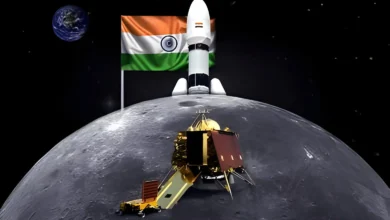A helicopter is a remarkable aircraft that utilizes rotating blades to achieve flight. It stands out from other aircraft due to its ability to hover in mid-air and perform vertical takeoffs and landings. The main rotor, positioned above the cabin, generates lift by spinning rapidly, while a smaller tail rotor counteracts the torque produced by the main rotor, enabling control of the helicopter’s direction. Helicopters possess incredible maneuverability, allowing them to fly in various conditions and access areas inaccessible to other aircraft. They serve a multitude of purposes, ranging from military operations and search and rescue missions to transportation and aerial filming. With their unique capabilities, helicopters have become an indispensable tool in numerous industries, demonstrating their versatility and value in the field of aviation.
- The first working helicopter, called the “Focke-Wulf Fw 61,” was invented by German engineer Heinrich Focke in 1936. It had two rotors, one placed above the other.
- Helicopters are capable of taking off and landing vertically, making them highly versatile aircraft that can operate in confined spaces and reach remote areas.
- Helicopters use rotating wings, known as rotors, to generate lift and propulsion. The main rotor provides lift, while the tail rotor or an anti-torque system helps counteract the torque produced by the main rotor.
- Helicopters have the unique ability to hover in mid-air, remaining stationary in one place. This capability allows for precise positioning and maneuvering during tasks such as search and rescue operations or aerial firefighting.
- The top speed of helicopters varies depending on the model and purpose. Some military helicopters can reach speeds over 200 mph (320 km/h), while commercial helicopters typically fly at speeds between 120-160 mph (190-260 km/h). Helicopters can also fly at impressive altitudes, with some reaching heights exceeding 40,000 feet (12,000 meters).
- Helicopters have a wide range of applications, including military operations, emergency medical services (EMS), aerial surveying, transportation of goods and passengers, tourism, law enforcement, and aerial filming.
- Helicopters are designed with a safety feature called autorotation. In the event of an engine failure, the rotor blades can still rotate freely due to the upward airflow, allowing the pilot to control the descent and land safely.
- There are various types of helicopters, including single-engine and multi-engine models, light utility helicopters, attack helicopters, transport helicopters, and heavy-lift helicopters like the Chinook. Each type is designed for specific purposes and missions.
- Piloting a helicopter requires specialized training and skills. Helicopter pilots undergo rigorous training to handle the complexities of flying, including hovering, autorotation, and navigation in different weather conditions.
- Helicopters have set numerous world records. For example, the fastest helicopter, the Eurocopter X3, reached a speed of 293 mph (472 km/h) in 2013. The highest altitude ever reached by a helicopter was 40,820 feet (12,442 meters) by a Eurocopter AS350 in 2005.
- Helicopters come in various sizes, from small two-seat models to large heavy-lift helicopters that can carry substantial loads. The size of a helicopter is determined by factors such as its purpose, payload capacity, and number of passengers it can accommodate.
- Helicopters are incredibly maneuverable and can perform complex aerial maneuvers like rolls, loops, and spins. Their ability to hover, fly backward, and laterally adds to their agility and versatility in different operational scenarios.
- Helicopters play a vital role in medical evacuation (medevac) operations. Equipped with medical equipment and personnel, they can rapidly transport injured or critically ill patients to hospitals or trauma centers, reducing travel time and saving lives.
- Helicopters are known for their distinctive noise and vibration. The noise is primarily caused by the rotor blades’ movement through the air, and efforts have been made to reduce helicopter noise to mitigate its impact on both passengers and the environment.
- The range of a helicopter depends on factors such as fuel capacity, weight, and speed. Generally, helicopters have a range of a few hundred miles, but long-range helicopters can cover distances over 1,000 miles (1,600 kilometers) without refueling.
- Helicopters can take off and land from designated landing areas called helipads or heliports. These are typically found on buildings, hospitals, ships, offshore platforms, and dedicated landing sites, providing convenient access to urban areas or remote locations.
- Ongoing advancements in helicopter design aim to improve efficiency, safety, and performance. This includes the development of compound helicopters, which combine features of fixed-wing aircraft and helicopters to achieve higher speeds and improved fuel efficiency.
- Several companies worldwide specialize in manufacturing helicopters. Prominent manufacturers include Airbus Helicopters, Bell Helicopter, Leonardo Helicopters, Sikorsky (a Lockheed Martin company), and Russian Helicopters.
- The world’s first practical helicopter, capable of both hovering and forward flight, was the Sikorsky R-4. It was designed by Igor Sikorsky and made its first flight in 1942.
- The longest commercial helicopter flight was achieved by a Eurocopter EC 155 B1 helicopter, flying a distance of approximately 2,213 miles (3,562 kilometers) from Paris to Tibesti in Chad in 2010.
- The Mil V-12, also known as the Mil Mi-12, is the largest helicopter ever built. It had a length of 99 feet (30.1 meters) and a rotor diameter of 114 feet (34.8 meters).
- Helicopter air ambulances, commonly known as “HEMS” (Helicopter Emergency Medical Services), provide rapid transportation of medical professionals and equipment to emergency scenes and transfer critically ill or injured patients to hospitals, enabling timely and lifesaving interventions.
- Some military helicopters, such as the Kamov Ka-50/52, are equipped with ejection seats. These seats allow the pilots to be safely ejected from the helicopter in emergency situations.
- HUET is a specialized training program that prepares helicopter passengers for emergency scenarios involving water landings and subsequent escape from submerged or capsized helicopters.
- Helicopters are capable of carrying external loads suspended from a cable or rope, known as “slung loads.” This capability is particularly useful in construction, logging, and cargo transportation, allowing the transport of heavy or bulky items to otherwise inaccessible areas.
- Helicopters have set various speed records over the years. For instance, the Westland Lynx helicopter holds the helicopter speed record of 249.1 mph (400.87 km/h) achieved in 1986.
- Some military helicopters have the capability to perform air-to-air refueling, allowing them to extend their operational range and endurance by receiving fuel from tanker aircraft while in flight.
- Stealth technology has been applied to certain military helicopters to reduce their radar signature, making them less detectable by enemy radar systems. The Boeing–Sikorsky RAH-66 Comanche is an stealth armed reconnaissance and attack helicopter designed for the United States Army.






